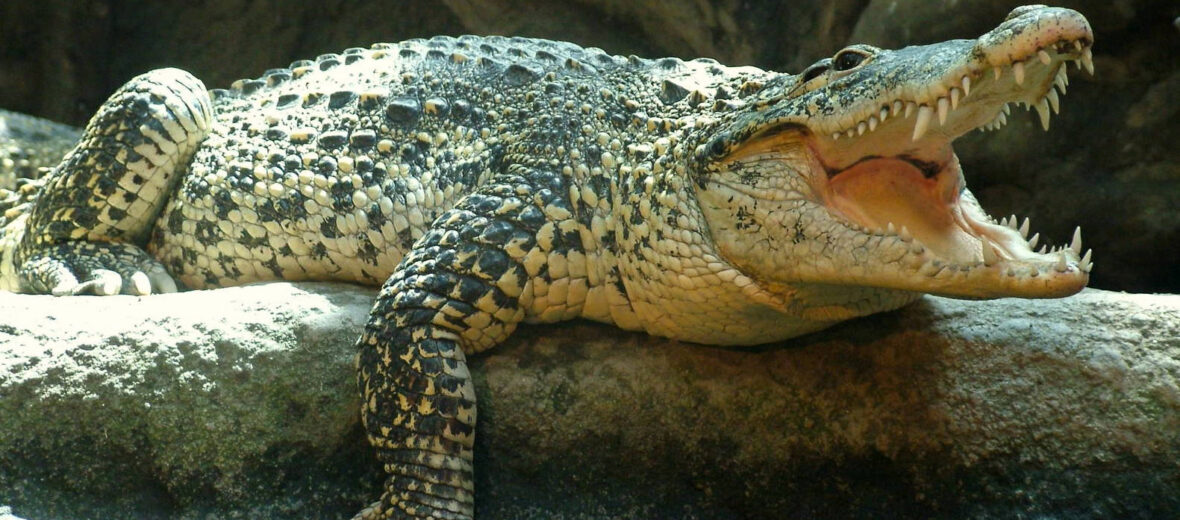
Listed as 1 of the most endangered of all the New World (North and South America) crocodilians, the Cuban crocodile, aka pearly crocodile, can be found on the main island country of Cuba and several of the surrounding smaller islands. These crocs prefer fresh water swamps and marshes, and rarely ever navigate salt water. Cuban crocodiles inhabit the smallest known range of any living crocodilian, to date. Due to their diminutive habitat, low numbers (only an estimated 4,000+/-), hunting, trapping, habitat loss, and hybridization with American crocodiles, these reptiles are listed as Critically Endangered by the IUCN.
First the Stats…
Scientific name: Crocodylus rhombifer
Weight: Up to 180 lbs.
Length: Up to 7.5 feet, including tail
Lifespan: Up to 75 years
Now on to the Facts!
1.) These crocs spend more time on land than in the water. This has not only been observed, but is evident due to the lack of webbing on their feet.
2.) That being said, they are still strong swimmers and can walk, run, and even jump.
3.) Even though these crocs will cooperatively feed, they still have the typical crocodilian hierarchy based on gender, size, and general disposition.
4.) Cuban crocodiles possess a high level of intelligence but this also makes them more vicious and prone to attack. This intelligence is due to a well-developed cerebral cortex. Cubans are considered to be the most defensive of all the New World crocodilians.
5.) A group of crocodiles is called a float, bask, congregation, or nest.
But wait, there’s more on the Cuban crocodile!
6.) Adults prey on small mammals, fish, turtles, and even birds. Juveniles prey on small fish and arthropods.
7.) Cuban crocodiles are polygynous (1 male mates with several females).
Did you know…?
The gender of the hatchlings is dictated by surrounding temperature. 86°F – 89.6°F yields males. While females are produced at higher temperatures. Cooler temperatures can yield both males and females.
8.) Breeding season runs from May – September.
9.) Gravid (pregnant) females will lay up to 40 eggs that hatch in up to 70 days.
10.) As much as 99% of the eggs never get a chance to hatch. This is due to predation by other animals or cannibalization.
But wait, there’s still more on the Cuban crocodile!
11.) While in captivity, interbreeding often occurs with American crocodiles and Siamese crocodiles.
12.) Records indicate that giant ground sloths were once preyed on by Cuban crocodiles. This is further hypothesized by the presence of flattened rear teeth in today’s populations. They use these blunt teeth to aid in crushing turtle shells.
13.) Before attacking, these crocs will often utilize the waving movement of their flat tails to distract their prey, long enough to seize the moment.
Did you know…?
Via body and tail-based propulsion, these crocodiles can launch themselves out of the water and are able to grab unsuspecting birds in overhanging trees.
14.) Their scientific name is derived from the rhombus shape of its speckled scales.
15.) These and other crocodiles are known for their “high walk”. Which is to say that they don’t drag their abdomen on the ground. They are able to run up to 20 mph, on land.
Now a Short Cuban Crocodile Video!
Be sure to share & comment below! Also, check out the Critter Science YouTube channel. Videos added frequently!
Want to suggest a critter for me to write about? Let me know here.



